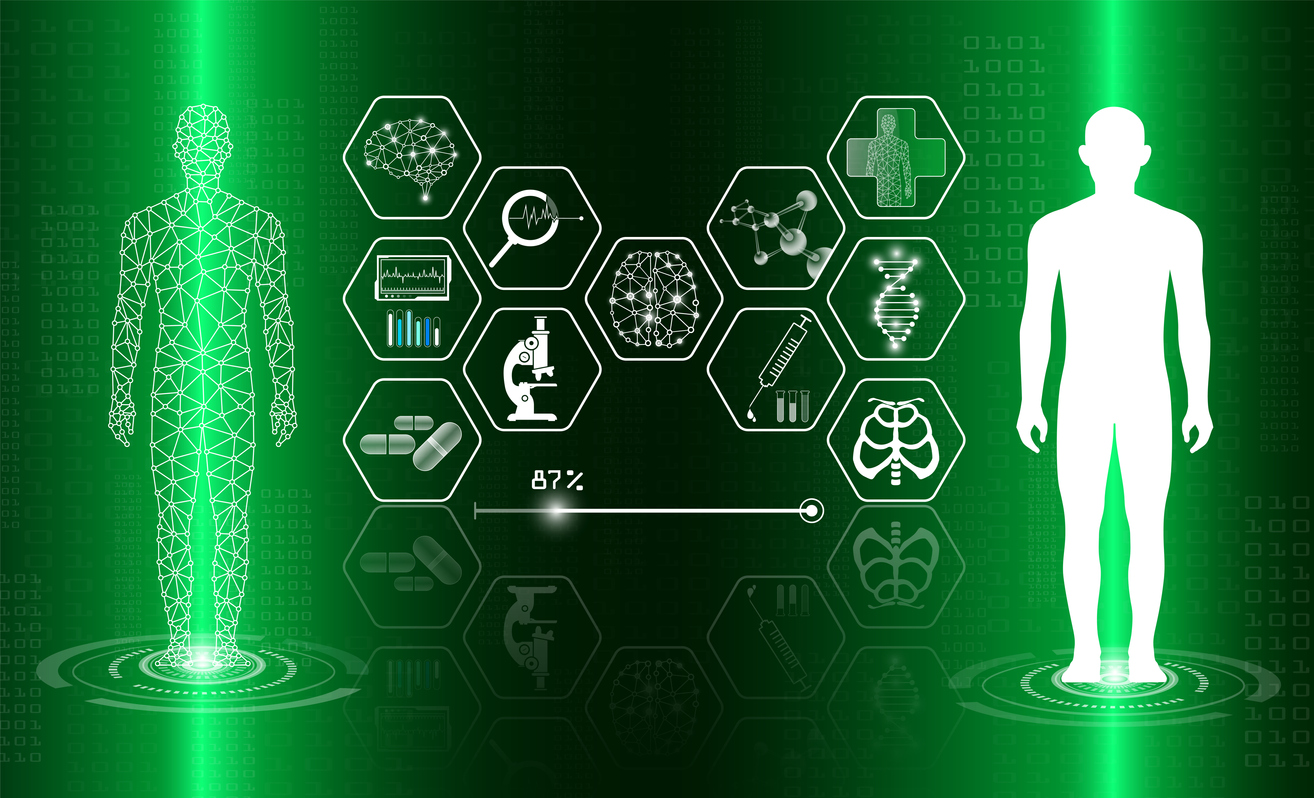Opportunities for Biomimetics in Healthcare
Medical biomimetics merges biology and technology to develop healthcare solutions. Bio-Inspirations are derived from nature to design practical materials and systems that can imitate the structure and function of native biological systems. The development process usually combines principles from material sciences, engineering, biology, chemistry, computer science, etc. In healthcare, biomimetics is applied in areas such as cardiovascular, ophthalmology, bio-engineering, dentistry, orthopedics, etc. Wound healing and drug delivery systems are the major research focus areas among the multiple applications. This article will cover these multiple areas, their applications, recent advancements, and developmental challenges. It will also provide an overview of the global market size and future directions of biomimetics in healthcare.
Biomimetics in Healthcare
Biomimetics has a multidisciplinary approach that connects several areas of science with nature and allows the development of new materials that are generally biocompatible with increased functionality. As per the forecast, it is estimated that the biomimetics market will increase from USD 6.8 billion in 2017 to USD 18.5 billion in 2028.
It is used in multiple healthcare areas, such as;

- Cardiovascular: Biomimetics has been used to develop biomimetic heart valves. These valves have greater durability and hemodynamic performance. They are used to develop bioengineered blood vessels used during bypass surgeries. The development of biomimetic cardiovascular implants is also relatively new, with substantial research being conducted in this area.
- Regenerative medicine: Biomimetics is extensively used for designing new scaffolds for increased cell adhesion and improved mechanical properties. Additionally, biomimetic materials have emerged as viable and competitive options for regenerative medicine. Such natural materials with 3d microstructures have been used to support vascularization.
- Dental: The use of biomimetics in dental implants is widespread. Natural teeth inspire implant designs to promote osseointegration. Biomimetic analogs of dentin matrix protein promote remineralization of dentine. In restorative dentistry, restorative materials mimic composite resins and glass ionomers.
- Orthopedics: Biomimetics has been used for bone repair and regeneration. The latest biomimetic load-bearing implants are designed to treat long bone critical-sized defects. They are used in cartilage repair and regeneration.
- Ophthalmology: Biomimetic materials are used to design contact lenses. The properties of those materials allow the lens to mimic the corneal surface. In retinal prostheses, biomimetic systems are designed to emulate autonomic pupil and corneal reflections.

Recent Advancements in Biomimetics
Biomimetics has undergone a lot of advancement, e.g., coated nano-drug delivery systems, cell membranes, gecko-inspired surgical glue, slug-inspired adhesive, etc. There have been a lot of advancements in biomaterials as well. Some of these advancements are:
- Wound Healing: Advancements are reported in hydrogels. For example, the latest smart biomimetic hydrogel systems have self-healing and self-adapting properties. They are based on oxidized chitosan (oxCS) and hyaluronic acid (oxHA) as nontoxic cross-linkers (API-CS-oxCS/oxHA).
- Drug delivery: Advancements are based on utilizing new biomimetic vascular drug delivery systems and hydrogels, apart from existing nano-drug delivery systems. Ex; Biomimetic exosomes are composed of designed lipids, proteins, and RNA. They have potential applications in cardiovascular disease. Clinical trials of biomimetic exosomes have just begun. A few others are given below:-
- Engineered artificial nanovesicles: Utilized to improve the ischemic‐lesions.
- Ufasomes& Ufosomes: These are highly ordered, with higher penetration and increased efficacy. They are currently under research.
- Biomimetic vitreous substitute: Ohio State University has developed a biomimetic vitreous substitute composed of copolymeric hydrogels-releasing antioxidants useful post vitreoretinal surgery.
- Tissue Engineering: Multiple advancements are reported, in scaffolds (bilayered), smart/intelligent biomaterials, grafts and many more.
- Mimetis Biomaterials has developed a graft for dental applications composing 80 % of Calcium Deficient Hydroxyapatite (CDHA) and 20% of β-TCP (beta-tricalcium phosphate). It mimics the exact composition of the tooth.
- Bilayered scaffolds, ex; MaioRegen composing type 1 equine collagen and magnesium-enriched hydroxyapatite (developed by Med &care).
Global Market Size and Opportunities
The medical biomimetics market is anticipated to be valued at USD 68.9 billion by 2031 and grow at a CAGR of 7.2% from 2021 to 2031.
Market Driving Factors are:
- An increasing geriatric population with a high prevalence of cardiovascular and orthopedic diseases
- Advancements in 3D bio-printing and manufacturing solutions
- Rise in research & development activities coupled with the growing application potential of medical biomimetics in diagnostic imaging and surgery. For instance, Imperial College London is currently developing a biomimetic flexible, steerable probe for minimally invasive surgery.
- High advancements in biomimetic functionalized nanotechnology
Major players in the market are Corneat Vision, Osteopore, Otsuka medical devices, Biomimetic therapeutics, and Swedish Biomimetics.
Major applications of biomimetics have been in wound healing, drug delivery, and tissue engineering. However, there are huge opportunities for other areas, such as diagnostic imaging, biomimetic sensors, and implants. Moreover, LifeMatrix has developed a distinctive bioengineering technology to grow human replacement tissues as next-generation implants for treating CVD.

Figure 3: Key healthcare companies and start-ups developing biomimetics in respective areas
Challenges in Biomimetics

Biomimetics holds high potential in treating multiple diseases. However, there are still a lot of challenges associated with their development, manufacturing, and regulatory approvals. Some of these challenges are;
- Development: Biocompatibility remains a common challenge across all the applications of biomimetics. Ensuring that the material doesn’t illicit any adverse immune reaction should be highly prioritized.
- Mechanical property: For biomimetic implants, bone replacement materials, blood vessels, valves, etc., mimicking the natural mechanical properties of these tissues to resist high mechanical stress and durability is a major challenge.
- Manufacturing: Fabricating complex structures, especially cardiac valves and blood vessels, is challenging. Although additive manufacturing has been used to produce them, fabricating such intricate geometries is still challenging. Current approaches in additive manufacturing face many challenges, such as the lack of effective design software for printing and prototyping tissues and scaffolds.
- Regulatory challenges: FDA approval for biomimetics is time-consuming, as comprehensive data based on preclinical studies, risk assessment (adverse risks associated with the biomimetic), post-market surveillance, labeling, and additional documents are required. In 2011, the Biomimetic Company ran out of approval timelines owing to FDA requirements for additional non-clinical tests, which took six to nine months to complete. ISO 18457:2016 guides using biomimetic materials and manufacturing technologies.
Future Directions
Biomimetics has evolved a lot with advancements in components such as regenerative scaffolds, and manufacturing processes. Additionally, future research needs to be implemented to optimize the cell interactions, control degradation, stress response, and adaptability.
Huge opportunities exist to utilize smart biomaterials with enhanced mechanical properties, which are self-healing/ self-renewable. Currently, 3D printing technology is limited due to the choice of fabrication materials. 3D printing needs further development to have a much wider choice of materials and decreased manufacturing time. Developing ultra-fast 3D printing technology is one promising direction.
Other biomimetics application areas, such as next-generation diagnostic imaging, hold promise for developing highly sensitive imaging platforms. Also, an EU-funded project coordinated by Fundacio Centre De Regulacio Genomica is currently developing a multiplexed biomimetic imaging platform for assessing single-cell plasticity.
Conclusion
The development of biomimetics holds immense value in revolutionizing various healthcare domains by offering much safer, more effective, and personalized treatment options. Although their applications are higher in wound healing or drug delivery, recent diagnostic imaging developments hint toward more comprehensive applications. In addition, the market’s fast growth is mainly driven by a significant increase in funding for research, a high geriatric population, and adoption and innovations in nanotechnology. The field faces a few challenges regarding wide biocompatible materials and manufacturing. However, manufacturing by 3d printing has given a huge opportunity to design materials with more intricate geometries, although the focus should be on decreasing manufacturing time. Moreover, continued research & collaboration between players will be crucial in unlocking the full potential of biomimetics in revolutionizing healthcare.



